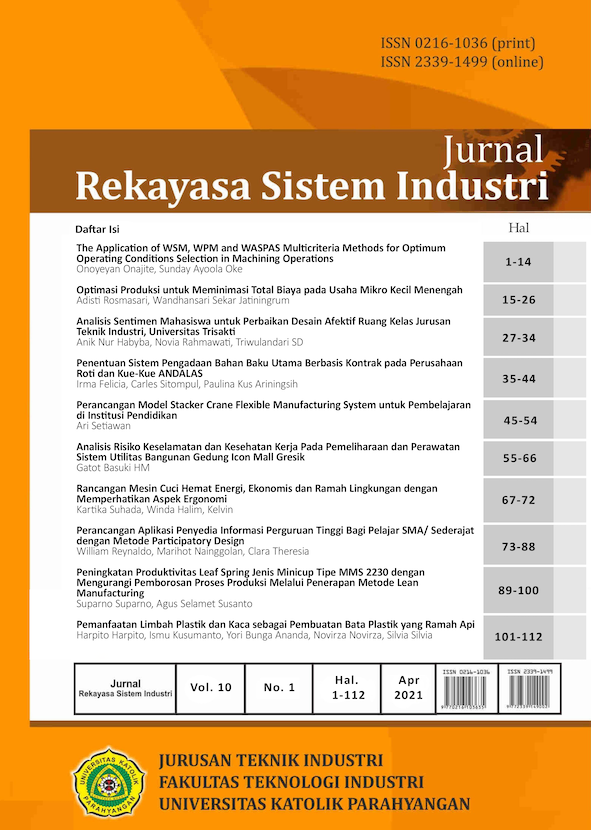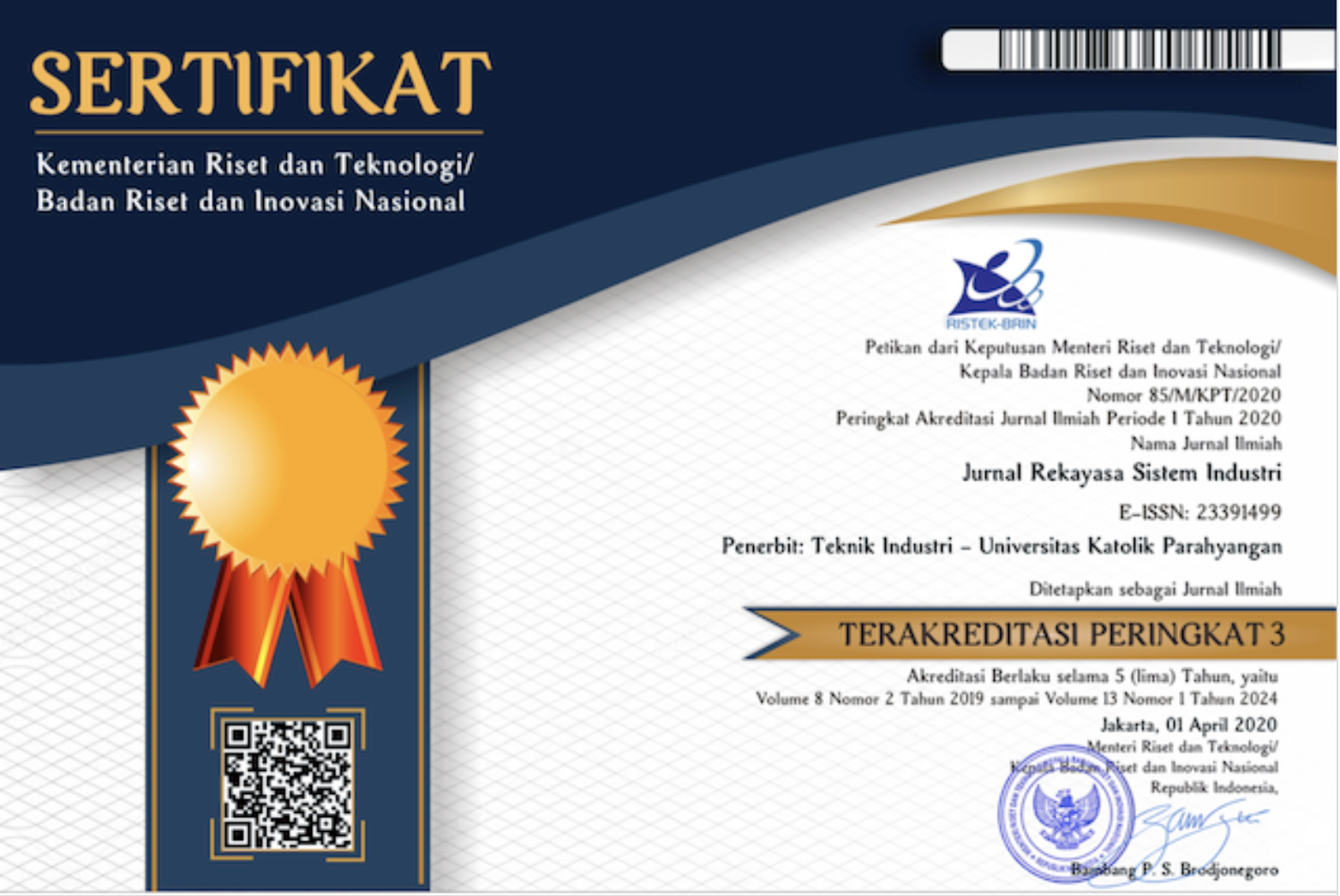Pemanfaatan Limbah Plastik dan Kaca sebagai Pembuatan Bata Plastik yang Ramah Api
DOI:
https://doi.org/10.26593/jrsi.v10i1.3995.101-112Abstrak
In order to preserve the environment from plastic waste, various ways can be done, one solution is to make a brick made from plastic that is the secret fire and use glass as its mixture. Fire-friendly here using the distillation tool is done so that the oil content of the plastic is separate and the plastics produced are more friendly to the flame. The experimental design by using RAL was used to determine the composition of brick making. In determining the composition is fitting done with a test object, a cube-shaped test object with a size of 5x5x5 cm. Maximum of absorbent brick power is 20%, from the processing result then in the sample can be 4th with water absorption of 0.74%. Based on data processing, the total plastic weight for plastic bricks is 12.77%. Then based on the observations that have been made known at a time 5 minutes 23 seconds. The bricks are not distilled, then the brick that has been distilled melted at a time of 17 minutes 40 seconds. Then based on the calculation result can be cost of raw materials amounting to Rp 51,000, labor cost of Rp 38,461, and the overhead variable fee is Rp 25,000. So the total cost per day of Rp 114,461. Then based on 5% margin, brick sale price of Rp 3,000/seed and breakeven point determination or break event point plastic brick 43 seed, and the point of the scan is Rp 99,350.6493.
Referensi
Ardi, A. W. (2016). Uji Kuat Tekan, Daya Serap Air dan Identitas Material Batu Bata dengan Penambahan Agregat Limbah Botol Kaca (Doctoral dissertation, Universitas Islam Negeri Alauddin Makassar).
Arwizet, A. (2017). Mesin Destilasi Pengolahan Sampah Plastik Menjadi Bahan Bakar Minyak Menggunakan Kondensor Bertingkat Dan Pendingin Kompresi Uap. INVOTEK: Jurnal Inovasi Vokasional dan Teknologi, 17(2), 75-88.
As, F. K., Novareza, O., & Santoso, P. B. (2017). Peningkatan Kualitas Produk Batu Bata Merah Dengan Memanfaatkan Limbah Abu Serat Sabut Kelapa Dan Abu Serbuk Gergaji.
Hasibuan, R. (2016). Analisis Dampak Limbah/Sampah Rumah Tangga Terhadap Pencemaran Lingkungan Hidup. Jurnal Ilmiah Advokasi, 4(1), 42-52.
Justin, J., Sadika, F., & Sufyan, A. (2015). Eksplorasi Limbah Kaca Studi Kasus Industri Mebel. eProceedings of Art & Design, 2(2).
Loria, D. P. (2019). Analisis Tekno Ekonomi Pengelolaan Sampah Plastik Sebagai Bahan Baku Pembuatan Bata (Doctoral dissertation, Universitas Islam Negeri Sultan Syarif Kasim Riau).
Marliani, N. (2015). Pemanfaatan Limbah Rumah Tangga (Sampah Anorganik) Sebagai Bentuk Implementasi Dari Pendidikan Lingkungan Hidup. Formatif: Jurnal Ilmiah Pendidikan MIPA, 4(2).
Prayuda, H., Setyawan, E. A., & Saleh, F. (2018). Analysis Physical And Mechanical Attributes of Masonry in Yogyakarta. Jurnal Riset Rekayasa Sipil, 1(2), 94-104.
Purwaningrum, P. (2016). Upaya Mengurangi Timbulan Sampah Plastik di Lingkungan. Indonesian Journal of Urban and Environmental Technology, 8(2), 141-147.
Umar, M. Z. (2017, April). Daya Serap Air Batako Beton Dari Bahan Pasir Pohara Dan Nambo. In Seminar on Applied Quantitative Research.
Wahyudi, J., Prayitno, H. T., & Astuti, A. D. (2018). Pemanfaatan limbah plastik sebagai bahan baku pembuatan bahan bakar alternatif. Jurnal Litbang: Media Informasi Penelitian, Pengembangan dan IPTEK, 14(1), 58-67.













